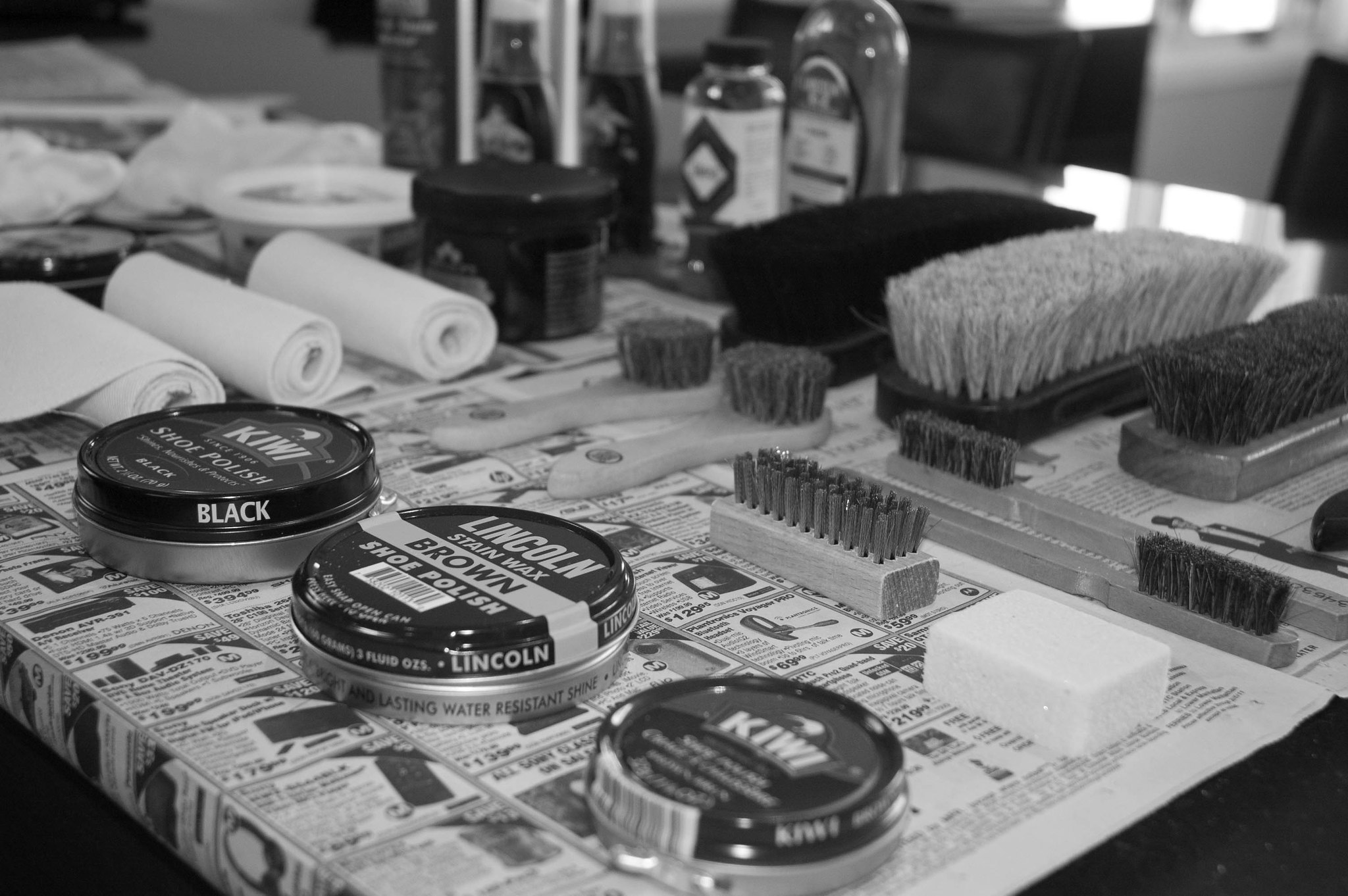Rating of the best sealants for soundproofing for 2025
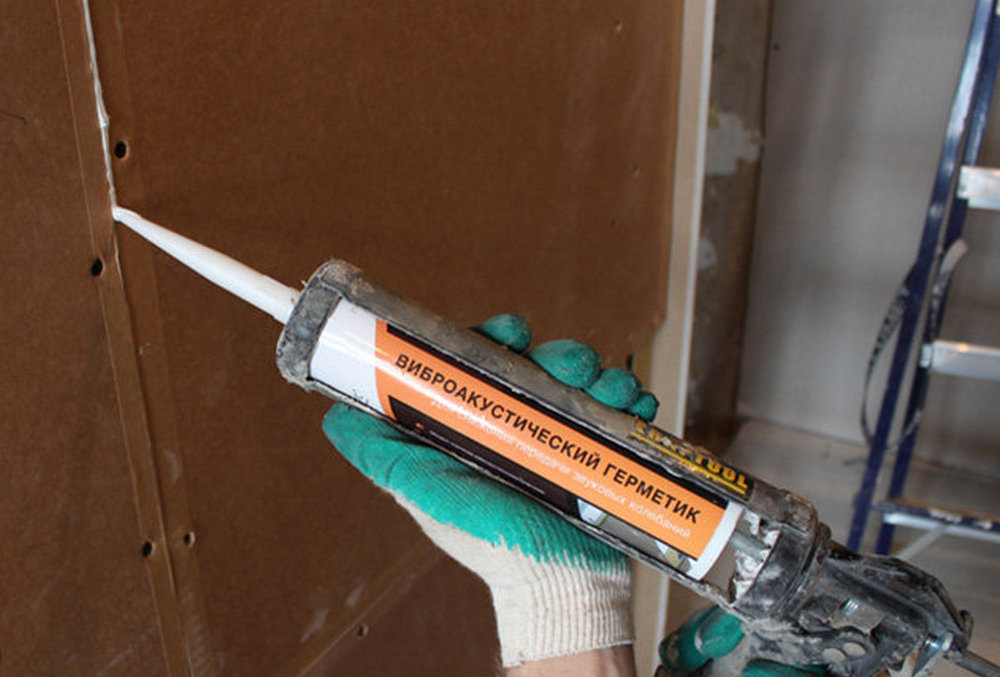
The problem of soundproofing modern homes has become very relevant, not so much because of the desire to remove street noises or sounds coming from neighboring rooms, but because of the increased need to limit one's own soundproofing so as not to disturb others. This issue is especially acute for residents of apartment buildings in metropolitan areas. The solution to this situation, which will be effective and fast (and also budgetary), can be a soundproof sealant.

Content
- 1 Features of the use of sealants for sound insulation
- 2 The need for soundproofing
- 3 Application process
- 4 Popular modern compositions
- 5 Noise-insulating coating on sealant and its scope
- 6 Noise isolation on liquid sealant - general information and reasons for popularity
- 7 Difficulties of choice
- 8 Expert advice on noise reduction in living spaces
- 9 Rating of the best sealants for soundproofing for 2025
- 10 Instead of an epilogue
Features of the use of sealants for sound insulation
At the very beginning of their production, sealants were used exclusively as a coating for thermal insulation, however, over time, they became more and more associated with the noise suppression function, and then their functionality began to be mostly focused on this. The reason for this was the fact that much more effective materials appeared for laying thermal insulation.
Typically, soundproofing sealants are used for arranging residential premises in which there are significant gaps at the joints (wooden structures), or the walls are subject to frequent cracking. Sealing solutions are applied at the joints on both sides - from the inside of the room and, accordingly, from the outside.After such processing, along with a decrease in the noise level, penetrating vibrations will be significantly reduced.
Characteristics and properties of the compositions
Sound deadening sealants are usually made from special resins, the density of which is able to contribute to the proper blocking of the space they fill. The silicon-containing elements present in the composition also affect the increase in strength and flexibility. Noise reduction is not the only advantage of such a sealant. Its accompanying function is the suppression of the propagation of structural vibrations in load-bearing structures, which indicates its vibroacoustic properties. The main indicator of a high-quality sealed composition is the density of its surface layer. It must be at least 300 grams per square meter, otherwise the composition will not perform a soundproofing function.
The need for soundproofing
In principle, it is possible to get rid of all kinds of noise in any structure and at any stage of construction or repair, however, it is preferable to get rid of structural noise even at the stage of building construction.
Most living spaces contain various types of noise. For example, in the apartment located on the floor below there is an office where people constantly slam the doors and talk, as they say, “out loud”. Here we should immediately talk about the totality of noise, which must be eliminated by soundproofing the floor.
Accordingly, the applied sealant must have the functions of noise absorption and noise repellency. It will not be superfluous to also use damper pads, which will partially absorb penetrating sounds.Proper selection of a sealed composition, applying it in the right places, can even negate the need to use "acoustic floating floors", which will clearly reduce the financial costs of suppressing alien noise. This means that there will be no need to purchase a special mineral wool with a 100 mm layer and mount a powerful screed.
Sound insulation of the so-called "cardboard" walls, as a rule, is required to be carried out if it is necessary to protect against airborne noise. This issue can also be solved by sealing all, even the smallest cracks and seams, with a sealant. The applied layer should be the thicker and more abundant, the more noise passes from the neighbors. Together, you can use a noise-repellent material, for example, extruded polystyrene foam or staple fiberglass.
Achieving the desired effect can also be brought closer by increasing the layers of GCR. And in the case of using ZIPS industrial production, you need to choose a brand of sealant with special water-repellent properties. In general, the whole structure will have a rather significant weight, so first you need to make sure that the walls can withstand such a load.
Application process
This procedure is not particularly difficult, the main thing is to do everything very carefully, after protecting your hands and eyes:
- First of all, it is necessary to prepare the surface for applying the solution - this is done by banal cleaning of visible debris and simple degreasing (no sanding is required).
- Then it is necessary to paste over the edges of the seam with protective tape (even an ordinary one, not necessarily a construction one, will do). This stage is necessary so that the composition lies evenly, and its excess is easy to remove.
- Directly apply the sealant itself, it is important to remember that the seam must be filled from the bottom up, if the surface to be treated is vertical or at an angle. The application of the mixture should occur gradually, all treated spaces should be filled evenly.
- Next, the applied composition should be leveled - usually, a small spatula or a standard sponge is used for this purpose.
- The final step will be the dismantling of the protective tape with excess mixture.
IMPORTANT! If, however, the mixture has penetrated beyond the desired zone, then it is easy to remove it with a standard detergent. The main thing is to do this before it hardens.
Popular modern compositions
The soundproofing sealants on the market today differ in their composition and consistency, which affects their use when processing different surfaces. According to these properties, they can be classified into several types:
- On an acrylic base - this composition hardens after drying and is intended for surfaces that are permanently subject to mechanical influence;
- On a silicone base - this type of mixture is considered the most common and after drying it does not lose its elasticity, therefore it is slightly susceptible to cracking over time, it can be used on almost all types of surfaces and regardless of the size of the seam being processed;
- On other bases - this usually refers to different types of mounting foam, which in itself absorbs vibrations well and contributes to sound insulation.
Noise-insulating coating on sealant and its scope
This is the name of the soundproofing material, which has a butyl rubber layer.Its thickness can vary by 2, 4 and 8 millimeters, with the thickness of the sealant itself being 2 millimeters. Some insulation options may be diluted with a metallized layer in order to reflect heat. The operating temperature for their use should be between -50 and +80 degrees Celsius.
The main advantage of the “hermetic noise” is that, in addition to heat and sound insulation, it prevents the formation of condensate on the treated surface. It is possible to paste over the working surface with one layer, without gluing the vibrosheet with the first layer.
Most often, "Shumka on sealant" is used in auto repair work - it is pasted over the bottom of cars. A popular material for such purposes is isolon with a sealant layer 4 or 8 millimeters thick, foil isolon is used a little less often on a similar sealant layer with the same thickness.
Also, this material can be used for gluing the cabin of trucks and special construction equipment in order to reduce the generated working noise. For this, penofol material is used, and the sealant layer should be from 4 to 8 millimeters.
Similarly, this method can be used to isolate autonomous weather stations, switchboard rooms, various change houses, mobile structures, trailers where technical equipment is installed that creates vibration and noise during its operation.
- The process of processing "Shumka on sealant" is very similar to the process of standard application:
- First you need to degrease and clean the work surface;
- Cut off the desired piece of material according to the required dimensions;
- Gently apply a sealed mixture to it;
- Stick on the work surface, smoothing the material from the center to the edges.
IMPORTANT! Almost all cases of poor adhesion of the sealant to the surface and, accordingly, peeling of the material, are due to the fact that the surface was poorly degreased. At the same time, the fact of a strong curvature of the processed base can also play a negative role. At the same time, the negative impact of a bent base can be compensated for by using penofol, because it has a lower density than foil isolon or isolon.
In the construction business, “hermetic noise” is used to remove the condensation plane on metal bases and for simultaneous thermal insulation of slopes at windows on the inside of the building.
Double-sided sealant can be used in the construction business to waterproof the base for subsequent reinforcement of the sealant with a special reinforcing fabric (for example, fiberglass). At the same time, the double-sided sealant can be applied to any type of thermal insulation. It is possible for them to reinforce slopes, ebbs and window sills at the windows to give them special rigidity and prevent the appearance of a “drum effect”.
Noise isolation on liquid sealant - general information and reasons for popularity
This composition belongs to the category "on other bases" and it consists of liquid polyurethane, which is able to perfectly fill all the smallest cracks. The treatment process itself is the usual spraying of a substance into the treated cavity. The liquid mixture itself is capable of filling almost any holes with high quality, while forming a monolithic layer that prevents the penetration of extraneous sounds. After its solidification, the formed foam has no special mass, thus, there is no excessive load on the treated base.In addition to its main function, liquid polyurethane foam will help protect the apartment from the penetration of many rodents and insects into it. Also, the polymer can be applied without special preliminary surface preparation, it is not necessary to build any frame. During processing, the amount of pollution is formed at a minimum level. The service life of the foam is very long and averages about 50 years. The only disadvantage of using the described composition will be the need to work with a special tool.
The main advantages of liquid soundproofing sealant
Firstly, the foam itself has a very high degree of adhesion to all surfaces. Other positive qualities include:
- At the end of the work, the base will acquire excellent sound and heat insulating properties, which will not only eliminate extraneous noise, but will also save on heating.
- This polymer can penetrate into the most inaccessible cavities, which allows you to process openings in windows and doors, and such processing will save the apartment from cold drafts and howling wind in the cracks.
- Polyurethane foam has an increased rate of adhesion to the bases. There is no need to use the integration of the crate, it is possible to apply the polymer even on the ceiling without special preliminary cleaning, and the formation of pollution after work is minimal.
- With the help of this mixture, it is possible to completely seal the interior, because in the process a monolithic layer will be formed that fills all the cavities between the structural elements.
- Own small mass of the material - the foam in the frozen state has a minimum mass, which will qualitatively reduce the load on the processed structural elements.
- The porous fine-mesh structure formed after processing will make it possible to suppress noise waves in a wide sound range.
Popular types of modern polyurethane foam
The reason for the prevalence of this material lies in its availability - most brands are produced by high-quality brands with Russian participation and they have an affordable price. There are a sufficient number of them on the modern market, and they differ little in efficiency, but more in cost (due to the popularity of the manufacturer's brand). The most popular options are:
- "Synthesia" - produced in partnership with Spain. The advantages include adequate cost, environmental friendliness of the composition, the possibility of application without restrictions in any season and at any temperature.
- "Ecotermiks" - produced jointly with China. This composition additionally has a high degree of fire resistance and is able to prevent the spread of fungi and mold, as well as other harmful bacteria. It has an extremely budget price, unlike competitors.
- Demilec is a completely North American product related to premium soundproofing sealants. It is probably the most reliable and high-quality material to date to counteract extraneous sounds. Naturally, its main disadvantage will be a very high cost.
- Bayer is a purely German product from a world famous medical brand. Particular emphasis in production is placed on environmental friendliness, which allows the use of the mixture in specialized premises (hospitals, schools, kindergartens, etc.). At the same time, a special nozzle is included in the kit, eliminating the need to use special tools (pistol).
Difficulties of choice
In principle, if there is not a large amount of work to be done, but only a small spot repair is required, then you can choose the sealant yourself - it is enough to study the properties of the material being processed and select the appropriate mixture for it. In the case when a large-scale repair is to be done or the construction process in general, it is preferable to contact a specialized company whose specialists will make all the necessary calculations.
Advantages of contacting a construction company:
- The question will be assessed by an experienced specialist who is able to correctly select one or another sealant;
- After the work, they will be given a guarantee (at least three years), so the materials used and the work performed are selected and produced in the proper quality, which is directly interested in the contractor, and not just the customer;
- In the event that the company was contacted in the wrong season (for example, late autumn or winter), the company can provide a discount on the work;
- Construction companies usually have their own proven suppliers of materials, which once again indicates their quality.
At the same time, self-selection has its advantages:
- The customer significantly saves on everything - from materials to work, but not on his own time;
- In the process of studying the issue and performing work, the customer acquires useful knowledge and experience that will obviously be useful in the future;
- The money saved on the work performed can be invested in the purchase of better materials.
The consequences of improper selection of sealant
Even if the sealant was initially chosen incorrectly, after the completion of the work, the result may still seem even and beautiful.However, over time, the following warning signs may appear:
- The sealing layer will undergo cracking, the superimposed seam will begin to deform, new cracks will form;
- If additional material was applied on top of the layer, then it will begin to peel off;
- The surrounding surface will begin to suffer from moisture, its absorption and swelling will begin, the formation of biological corrosion will occur, or the process of decay will start;
- When subjected to mechanical stress (punctures and impacts), the sealant will lose its insulating properties.
Expert advice on noise reduction in living spaces
- If one of the residents uses acoustic equipment, then it is not possible to get by with a simple sealant - it is better to use additional soundproofing material;
- In order not to waste the soundproofing mixture on sealing windows and openings in them, it is preferable to immediately install dense double-glazed windows with thick glasses;
- Absolutely all joints of plasterboard slabs must be insulated with a sealant;
- When choosing a mixture, do not confuse the concept of sound insulation with thermal insulation - sealants can combine both of these qualities, as well as be specially designed for each specific purpose;
- It is possible to check the quality of sound insulation with the help of an acoustics specialist who can measure the permissible noise level;
- When buying a sealed mixture, it is imperative to pay attention to the packaging - it must be intact and have a tightly screwed lid. You should also set the expiration date and inquire about the storage rules (not lower than +15 degrees Celsius).
Rating of the best sealants for soundproofing for 2025
Lower price segment
3rd place: Chemlux 9021
This product is a one component low modulus silicone based sealant. Possesses neutral curing and residual adhesion. The manufacturer positions the sample as a composition for industrial use. Differs in average indicators of vibroacoustic protection. Able to harden only at room temperature and this requires a mandatory level of humidity. However, the silicone layer it creates is characterized by sufficient elasticity. The recommended price is 150 rubles.
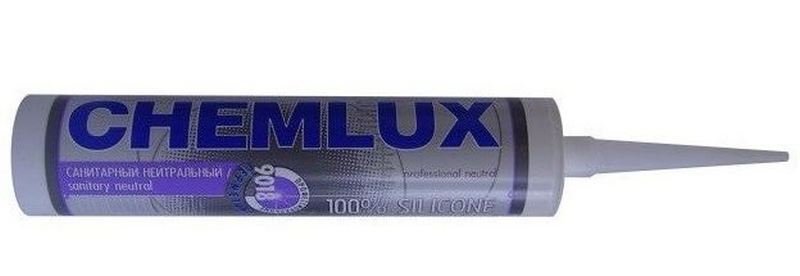
- UV resistant;
- Virtually odorless;
- Does not cause rust in metals;
- Long service life.
- Special conditions are required for hardening.
2nd place: Vibrosil 290
This sample can provide a reliable and high degree of sound insulation at the joints and in the cavities of building structures. In the case when the structures themselves carry a certain amount of noise-canceling properties, the properties of the sealant will also be enhanced. Suitable for use on various types of surfaces. Extremely resistant to structure-borne noise. The basis of the base is organosilicon substances and silicone modifiers. The recommended price is 290 rubles.
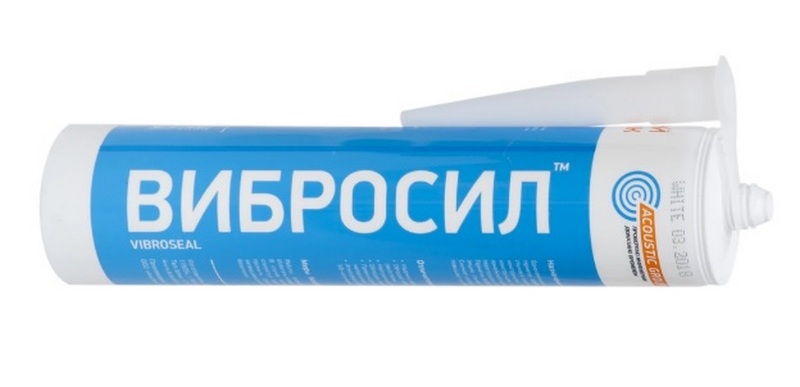
- Reliable adhesion regardless of the thickness of the seam;
- It is not an aggressive composition;
- Resistant to changes in temperature and humidity;
- Provides excellent sealing.
- Has a pungent odor.
1st place: "SoundGuard 310"
This mixture is characterized by high elasticity and is made on an acrylic base. The composition also includes silicone inclusions. It is used to fill construction joints, it is also capable of reliably filling holes and joints, and eliminating defects made during construction.It perfectly interrupts the propagation of sound waves in undamped structures, because it itself replaces the elastic damping pad. Possesses the increased properties of adhesion to the majority of materials. It also has a certain degree of moisture resistance. The recommended price is 320 rubles.
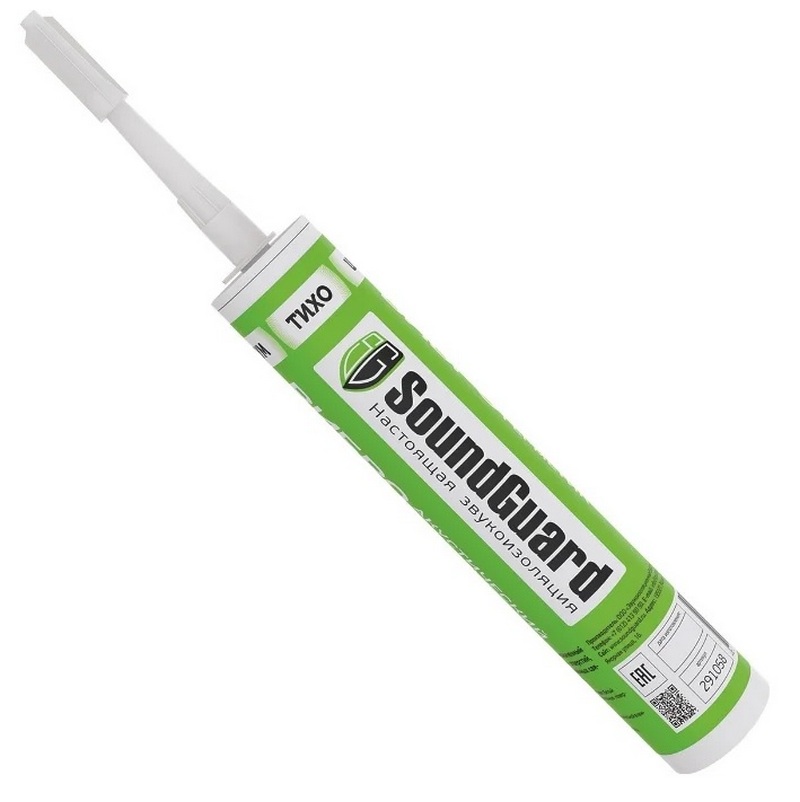
- Replaces damping pads;
- Has excellent adhesion;
- Does not emit irritating and unpleasant odors.
- Not detected.
Middle price segment
2nd place: Sonetik TechnoSonus 310
Non-flammable one-component composition designed to be used for sealing joints and joints in order to prevent the spread of sound vibrations. Its main advantage is a certain degree of versatility, allowing it to work on most building materials, but it does not adhere well to porous surfaces. At the same time, it can play the role of a damping layer. The recommended price is 420 rubles.
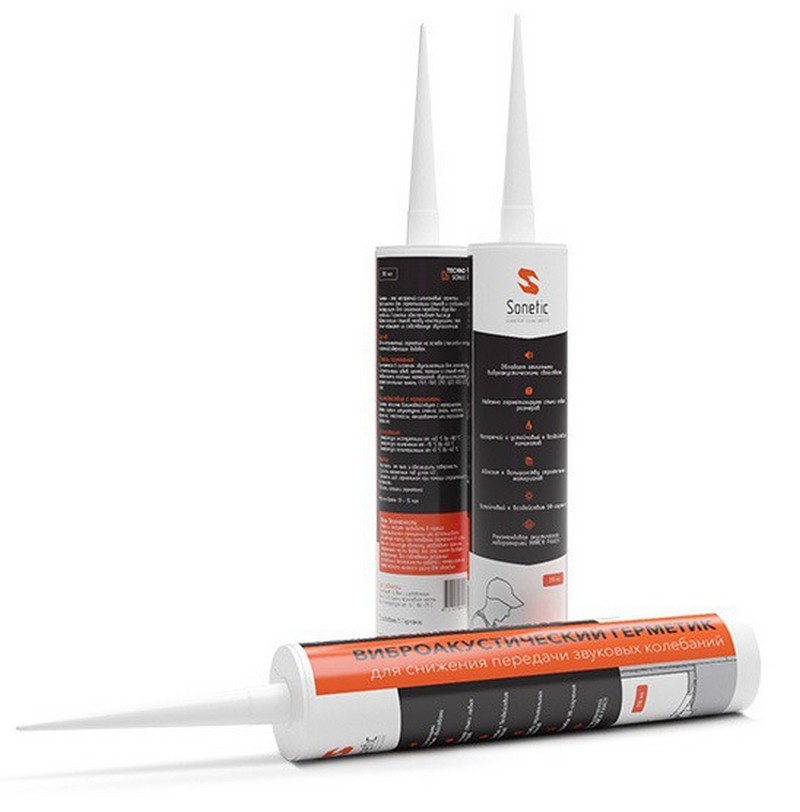
- Multifunctionality;
- Elastic composition;
- Can be used as a damping pad.
- Small volume in a tube;
- Weak adhesion to porous substrates.
1st place: "Barrier 100 dB C"
A sample of completely Russian production. It is a one-component silicone-based heat-resistant substance. Designed for sealing gaps and cracks, joints and joints. Qualitatively reduces noise and sound vibrations, fits perfectly on materials such as: concrete, metal, dry plaster. On a permanent basis, it remains elastic even after curing. The recommended price is 450 rubles.
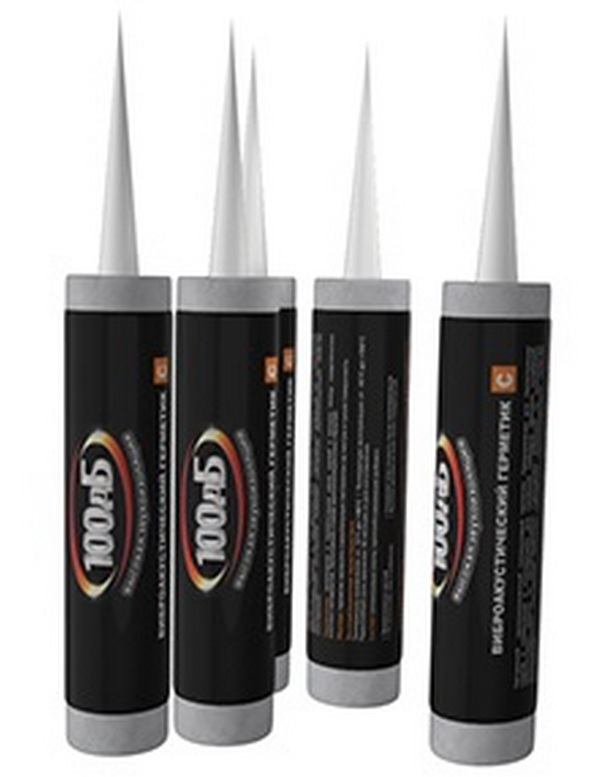
- Ecological cleanliness;
- Increased level of adhesion to most types of bases;
- Retention of elasticity after polymerization;
- It can also be used at sub-zero temperatures (down to -10 degrees Celsius).
- Not detected.
Premium blends
3rd place: "MAXFORTE 1000020"
The special composition of this sealant is able to reliably insulate the seams and joints in the walls and ceiling. Freely used for both vertical and horizontal surfaces, it is extremely relevant in the construction of the so-called "floating floors". Works with all existing building materials and provides a high degree of adhesion. Effectively absorbs sound waves. The recommended price is 490 rubles.
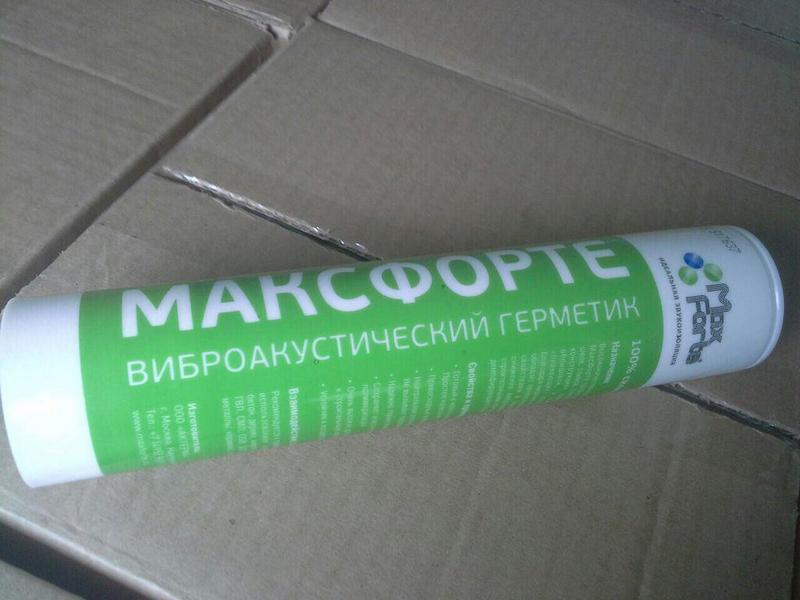
- Contains inhibitors for mold/fungus;
- Provides a high level of coupling;
- Does not emit unpleasant odors.
- Low modulus of elasticity.
2nd place: "SoundGuard 600"
Another sample from a Russian manufacturer, which is positioned primarily as a material for eliminating construction defects. The sound deadening feature is a nice addition. It is made on the basis of acrylic and is fully capable of performing the function of a vibration damping layer. Adheres well to most building materials. It has a high thixotropy, which allows it to cope with inclined surfaces. The recommended price is 510 rubles.
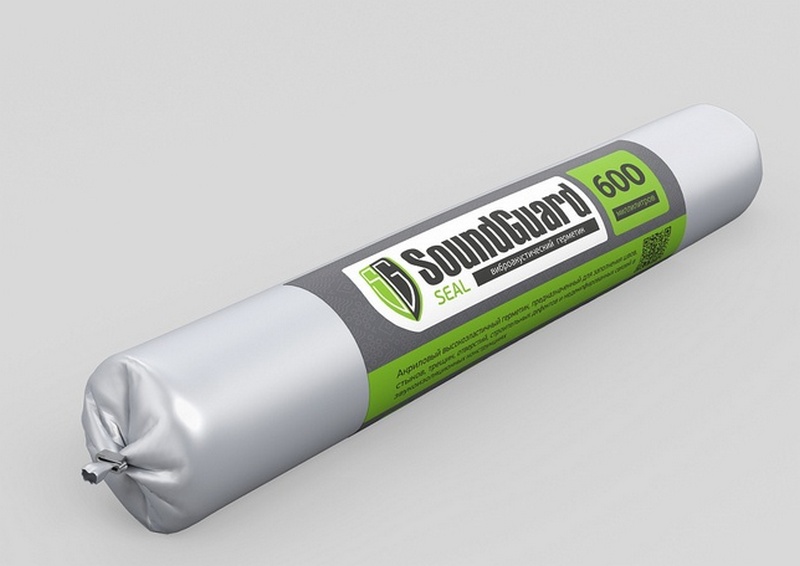
- High degree of thixotropy;
- Large volume in the package;
- Versatility.
- Not detected.
1st place: "Green Glue sealant"
Extremely high-quality and expensive composition from a well-known foreign brand. It has all the necessary qualities, including additional options.Globally positioned as the thinnest material that does not need to be applied in a thick layer in order to increase the effectiveness of noise reduction. Certified on the territory of the Russian Federation and the CIS. Field tests have proven that a layer less than 1 mm thick is sufficient to provide adequate sound insulation.
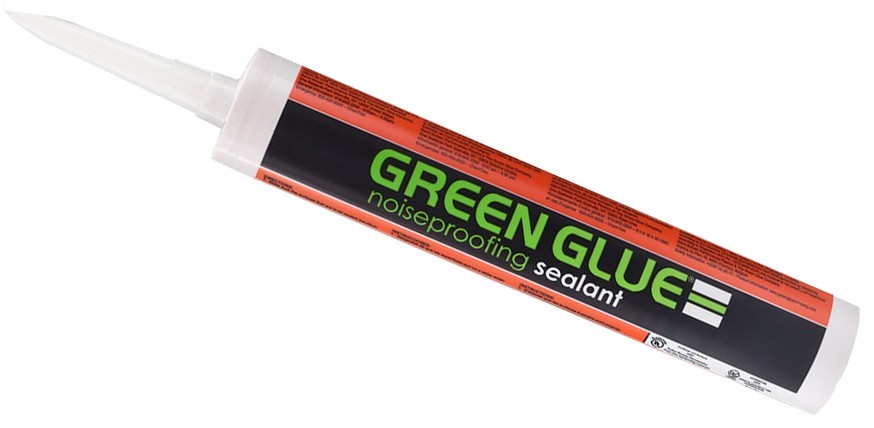
- High quality and reliable material;
- Ease of application;
- Versatility and multifunctionality;
- High environmental friendliness.
- Small tube capacity;
- Overcharge.
Instead of an epilogue
Summing up, it can be noted that soundproofing based on sealant will be an ideal solution to getting rid of extraneous sounds. This processing option is able to show the maximum efficiency of sound protection, coupled with an increased service life of the created protective layer.
new entries
Categories
Useful
Popular Articles
-

Top ranking of the best and cheapest scooters up to 50cc in 2025
Views: 131654 -

Rating of the best soundproofing materials for an apartment in 2025
Views: 127694 -

Rating of cheap analogues of expensive medicines for flu and colds for 2025
Views: 124521 -

The best men's sneakers in 2025
Views: 124038 -

The Best Complex Vitamins in 2025
Views: 121942 -

Top ranking of the best smartwatches 2025 - price-quality ratio
Views: 114981 -

The best paint for gray hair - top rating 2025
Views: 113398 -

Ranking of the best wood paints for interior work in 2025
Views: 110321 -

Rating of the best spinning reels in 2025
Views: 105332 -

Ranking of the best sex dolls for men for 2025
Views: 104370 -

Ranking of the best action cameras from China in 2025
Views: 102218 -
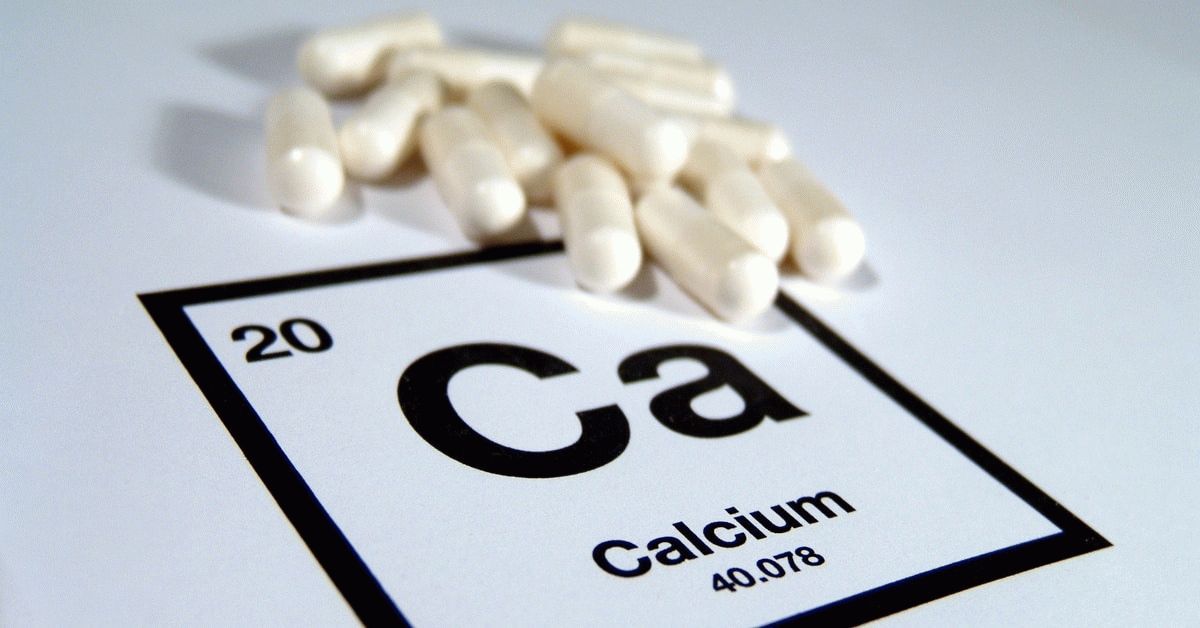
The most effective calcium preparations for adults and children in 2025
Views: 102014



